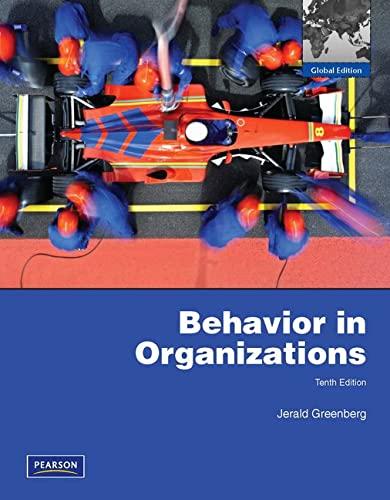In 2003, the Swiss Post decided to reduce its eighteen sites for processing mail to three major
Question:
In 2003, the Swiss Post decided to reduce its eighteen sites for processing mail to three major and six smaller sites across Switzerland. The main drivers were to cut costs through better planning, technological innovation, and downsizing. The division employed 17,000 people and planned to cut approximately 3,000 jobs, mainly through turnover and early retirement. A project team planned the change and supported all sites during the transition. The first new site opened at the end of 2007.
In cooperation with the site managers, the project team designed measures to support employees, such as a redundancy plan, a procedure for staffing, extensive training, and communication procedures. In addition, employees were informed about job offers, severance pay, and early retirement plans. As part of the consultation period, employees were invited to meet with their supervisors to discuss their options.
Each employee filled out an online questionnaire to provide more information about his or her job interests and preferred place of work. Employees who wanted to apply for jobs at the new sites signed the questionnaire along with their supervisor.
The applicants were rated and matched with the company’s staffing requirements. The site managers were then responsible for making job offers to suitable employees. Some employees received an offer for a lower level job with a lower salary, which they had to accept if they wanted to stay with the company. Employees who were not offered a job were invited to follow-up talks and were supported until they found alternative employment either in the firm or elsewhere. Employees older than 55 who were hired before 2003 could choose between a job offer or severance pay and training. Early retirement was offered to those over 58.
Courses and seminars to cope with the change, plan one’s career, apply for jobs, or learn software or languages were offered. Extensive financial support was granted for vocational education to help employees enter the labor market. Overall, the employees made little use of the training offered.
Open and timely communication was emphasized to give employees time to find a new job. A broad range of communication media was used, such as bulletin boards, monthly meetings with members of the project team, booklets, the intranet, and a personal letter discussing job interviews and listing personal consultants. In monthly meetings, employees were asked to express their concerns and needs so that any issues could be resolved.
Many of the employees were anxious about the possibility of losing their job. However, after the initial shock subsided, they were relieved that smaller regional sites were being added to support the six major sites. But what did the employees actually decide?
Many of the employees were not motivated to search for a new job as they hoped they would be offered a job at one of the new regional sites. They also did not take advantage of any of the free courses, seminars and/or training that was provided. Others quit their job early on in the change process and temporary employees were hired to keep up services. Although costly, this was a good solution and overall reduced the number of permanent employees. Some employees were more proactive than others and took advantage of the support programs available to them by attending training sessions and workshops.
The change proceeded smoothly and fewer employees than expected lost jobs. A year after the change, productivity increased and the managers were satisfied, but regretted that the flexibility exhibited during the change had again disappeared.
Questions for Discussion 1. What measures were used to plan and implement the change while ensuring the employees’ participation?
2. How did the employees react to the change and how do their reactions relate to measures in the change process?
3. What should the company do to maintain the level of flexibility after the change to ensure continuous successful implementation?
Step by Step Answer:






